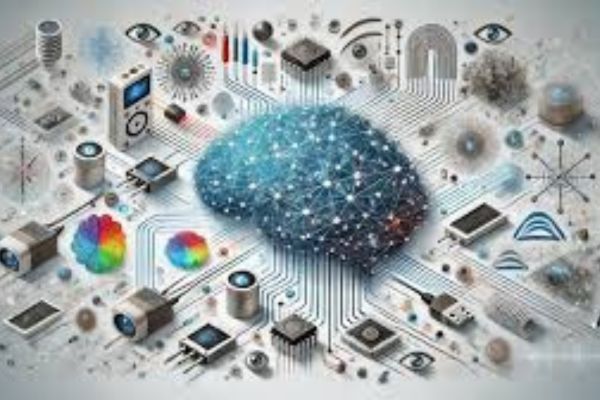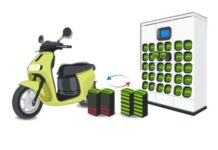Artificial Intelligence (AI) continues to change how we interact with the world, and one area that is gaining significant traction is the AI sensor. From smart cities to healthcare advancements, AI sensors are becoming indispensable in making real-time decisions based on environmental data. But what exactly are AI sensors, and how are they shaping the future of technology?
The AI sensor market is rapidly expanding, with cutting-edge advancements in sensor technology and artificial intelligence reshaping industries and creating new opportunities for growth. The market, valued at USD 4.28 billion in 2024, is projected to grow at an impressive compound annual growth rate (CAGR) of 41.7% over the next decade, reaching USD 139.66 billion by 2034. This meteoric rise highlights the increasing role of AI sensors in various sectors, including automotive, healthcare, industrial automation, and consumer electronics.
What Are AI Sensors?
AI sensors are intelligent devices that combine sensor technology with artificial intelligence algorithms. Unlike traditional sensors that merely collect data, AI sensors are capable of processing and analyzing that data in real-time to make intelligent decisions without the need for human intervention. This combination of sensing and computing allows these devices to detect, interpret, and act on a range of signals from the physical world.
AI sensors are at the core of smart systems and devices, allowing them to “learn” from their environment and adapt accordingly. For example, AI sensors in autonomous vehicles not only detect obstacles but also understand the situation and make driving decisions in real-time.
How Do AI Sensors Work?
At the core of every AI sensor is a combination of sensor hardware and AI software. The sensor itself detects changes in the environment (such as light, temperature, motion, or pressure), while the AI component processes the data, interprets it, and makes decisions based on predefined rules or machine learning models.
- Data Collection: The sensor detects data from its environment.
- Data Processing: The collected data is passed to AI algorithms that analyze and interpret it, often through pattern recognition and anomaly detection.
- Decision-Making: Based on the analysis, the system can trigger an action (such as adjusting a machine’s operation, issuing a warning, or altering a device’s settings).
For example, in a smart home, AI sensors can adjust the lighting based on the time of day and the presence of people, ensuring energy efficiency while maintaining comfort.
Key Drivers of Market Growth
The rapid growth of AI sensors is driven by several technological, economic, and social factors that are transforming industries:
1. Advancements in AI and Sensor Technologies:
- Innovations in both sensor hardware and AI software are enabling sensors to process and analyze data more accurately and efficiently. With machine learning and deep learning techniques becoming increasingly sophisticated, AI sensors are capable of performing complex tasks across a wide variety of industries.
2. Demand for Automation and Smart Systems:
- As industries embrace automation and smart technologies, the demand for AI sensors grows. In manufacturing, robotics, and logistics, sensors are enhancing productivity, safety, and operational efficiency by enabling machines to perform autonomous tasks.
3. Growth of the Internet of Things (IoT):
- The IoT ecosystem is expanding rapidly, with connected devices becoming an integral part of both personal and industrial environments. AI sensors play a crucial role in making these devices smarter, enabling them to process and respond to data locally, without needing to rely on centralized computing systems.
4. Rise of Autonomous Vehicles:
- Self-driving cars rely heavily on AI sensors for navigation and decision-making. These sensors help vehicles interpret their surroundings, avoid obstacles, and make real-time driving decisions, contributing to safer, more efficient transportation systems.
5. Healthcare Innovations:
- In healthcare, AI sensors are integral to the development of wearable medical devices that continuously monitor vital signs, detect early signs of illness, and even predict medical events. As the healthcare industry focuses on remote patient monitoring and personalized treatment, the role of AI sensors becomes even more critical.
Applications of AI Sensors Across Industries
AI sensors are finding applications across a wide range of sectors, transforming the way industries operate and how people interact with technology.
1. Automotive Industry (Autonomous Vehicles)
In the automotive industry, AI sensors are critical for enabling autonomous driving. Sensors like LiDAR, cameras, radar, and ultrasonic devices detect the vehicle’s surroundings, while AI algorithms interpret the data to help the car make safe driving decisions. These sensors allow vehicles to navigate, avoid obstacles, and make split-second decisions in dynamic environments.
2. Healthcare (Wearable Devices)
AI-powered sensors are revolutionizing healthcare by enabling the development of wearable health devices. Smartwatches, fitness trackers, and even medical monitoring devices collect data on heart rate, blood pressure, oxygen levels, and more. AI algorithms process this data to provide personalized health insights, early warnings about potential health issues, and real-time feedback to users and healthcare providers.
3. Industrial Automation
AI sensors are increasingly being used in manufacturing and industrial automation to improve production efficiency, reduce downtime, and enhance safety. For instance, AI sensors in factories can monitor machines for signs of wear and tear and predict when maintenance is needed, reducing the risk of expensive equipment failures.
4. Smart Homes and Cities
AI sensors form the backbone of smart homes and smart cities. In smart homes, AI sensors can adjust temperature, lighting, and security based on user behavior and preferences. In smart cities, AI sensors help with traffic management, waste disposal, energy consumption, and environmental monitoring, contributing to more efficient and sustainable urban living.
5. Environmental Monitoring
AI sensors are also instrumental in environmental monitoring. These sensors can detect pollutants, monitor air quality, and even predict natural disasters. The real-time data gathered by AI sensors provides valuable insights into environmental changes, helping authorities take preventive measures and mitigate risks.
The Future of AI Sensors
The future of AI sensors is filled with exciting possibilities. As the technology matures, AI sensors will become even more integrated into everyday life and industrial applications.
1. Miniaturization and Cost Reduction:
- As AI sensor technology advances, sensors will become smaller, more affordable, and easier to integrate into a wider array of products and systems, from consumer electronics to industrial equipment.
2. Smarter AI Algorithms:
- As machine learning algorithms continue to evolve, AI sensors will become even more intelligent, capable of making more complex decisions and adapting to new and unforeseen situations in real-time.
3. Widespread Integration in IoT Devices:
- AI sensors will play a key role in expanding the capabilities of the Internet of Things (IoT). From smart homes to wearable health devices and industrial IoT, the demand for AI sensors will continue to grow as more devices become interconnected and smarter.
AI Sensor Market Top Companies:
- Teledyne Technologies Incorporated (US)
- Robert Bosch GmbH (Germany)
- Goertek Inc. (China)
- Baidu Inc. (China)
- Yokogawa Electric Corporation (Japan)
- Excelitas Technologies Corp (US)
- Hokuriku Electric Industry Co. Ltd. (Japan)
- Sensata Technologies Inc. (US)
- Sensirion AG (Switzerland)
- Sensortek Technology Corporation (Taiwan)
- Silicon Sensing Systems Limited (UK)
- Sony Corporation (Japan)
- MEMSIC Semiconductor Co. Ltd. (China)
- Movella Inc. (US)
- Senodia Technologies (Shanghai)Co Ltd. (China)
- STMicroelectronics N.V. (Switzerland)
- Syntiant Corp. (US)
- TE Connectivity (US)
- Alif Semiconductor (US)
- Augury (US)














